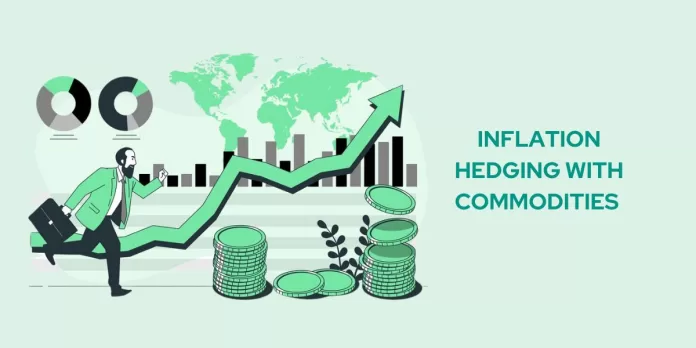Inflation is a familiar challenge we all know about, and investors are searching for reliable shelters to protect their wealth because it’s inevitable. Among the rising stars in this scenario are commodities, showcasing a historical dance with inflation, offering investors a lifeline during turbulent economic seas. Understanding the intricate ways in which commodities act as an inflation hedge becomes paramount in these challenging times.
Unlike their financial counterparts, commodities are tangible assets, possessing intrinsic value rooted in the physical world. This tangible presence makes them less susceptible to the whims of financial markets, aligning them more closely with the real-world ebb and flow of supply and demand. As inflation takes its toll on production costs, commodity prices tend to ascend, providing a natural defence against the erosion of purchasing power.
Investors have multiple options of commodities to choose from, each with its unique characteristics and risk profile:
- Precious Metals: Gold and silver are timeless guardians against inflation, prized for scarcity and historical significance.
Find: Silver Or Gold: Which One Is A Better Investment Option?
- Energy: The indispensable duo of oil and natural gas, their prices swaying with geopolitical events and supply chain disruptions.
- Agriculture: Grains and livestock are sensitive to weather conditions and global food demand fluctuations.
- Industrial Metals: Copper, aluminium, and steel are pivotal for various industries, their prices buoyed by increased infrastructure spending and economic growth.
Investing in commodities:
- Physical Commodities: Direct exposure through purchasing and storing physical commodities, albeit with potential cost implications and the need for specialized storage.
- Commodity Futures Contracts: Speculating on future price movements by buying or selling commodities at predetermined prices on future dates.
- Commodity ETFs: Diversified exposure through Exchange-Traded Funds, simplifying investment and reducing risk.
Watch: Potential of Gold ETFs - Commodity-Linked Investments: Investment vehicles like commodity-linked notes, offering exposure to commodity prices without direct ownership.
Hedging inflation through commodities offers key benefits for investors. Firstly, commodities act as strong safeguards, protecting against rising prices and preserving wealth during inflation. Secondly, they provide resilience and diversification to investment portfolios, reducing risk and enhancing overall performance. Lastly, the global reach of commodity markets exposes investors to diverse economies, creating growth opportunities. In summary, leveraging commodities for inflation hedging is a versatile strategy addressing wealth preservation, risk management, and global market dynamics.
Conclusion
Commodities emerge as a potent instrument for investors navigating the complexities of inflation and safeguarding their wealth. Delving into the dynamic world of commodity markets requires an understanding of their nuances, coupled with astute choices in investment options. As investors embark on this intriguing journey, it’s essential to harmonize the historical correlation between commodities and inflation with a careful ear to the potential risks and volatilities inherent in this financial symphony. As the saying goes, “In investing, what is comfortable is rarely profitable.”


